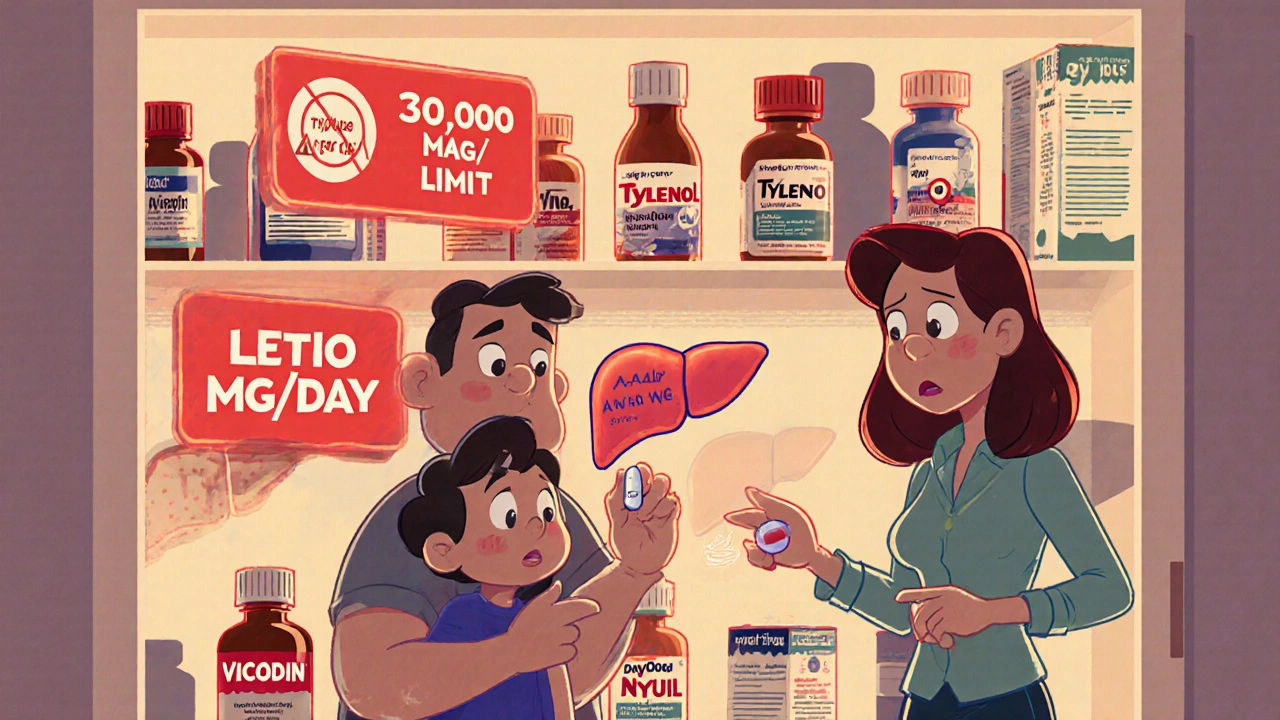Acetaminophen Overdose: Symptoms, Risks, and What to Do
When you take too much acetaminophen, a common painkiller found in Tylenol and hundreds of other medications. Also known as paracetamol, it’s safe at recommended doses—but a small mistake can turn it deadly. Every year, thousands of people end up in the hospital because they didn’t realize how easy it is to overdose. You might think, "I just took one more pill," but acetaminophen builds up quietly in your liver. No vomiting. No immediate pain. Just slow, silent damage.
The real danger? It hides in plain sight. Cold medicines, sleep aids, prescription painkillers—they all often contain acetaminophen. You take one for your headache, another for your cold, and a third for your fever. Before you know it, you’ve hit the limit. The liver, the organ that processes every drug you swallow doesn’t scream when it’s failing. By the time you feel sick—nausea, sweating, confusion—it’s often too late for simple fixes. That’s why the maximum daily dose, 4,000 milligrams for most adults isn’t a suggestion. It’s a hard stop.
What happens after an overdose? The liver starts breaking down the excess drug into toxic byproducts. If your body can’t neutralize them fast enough, cells die. That’s when liver failure kicks in. In severe cases, you need a transplant—or you don’t survive. But here’s the good part: if you act fast, you can stop it. The antidote, N-acetylcysteine, a medication given in hospitals to reverse acetaminophen toxicity, works best within eight hours. Waiting makes it less effective. If you or someone else took too much—even if they feel fine—call poison control or go to the ER. Don’t wait for symptoms.
People think acetaminophen is harmless because it’s sold over the counter. But that’s exactly why it’s so dangerous. No one warns you that mixing it with alcohol, or taking it for days on end for back pain, increases the risk. And children? Their limits are even lower. Parents don’t realize that children’s Tylenol and adult Tylenol aren’t interchangeable. One extra teaspoon can be life-threatening.
What you’ll find in the articles below isn’t just theory. These are real cases, real mistakes, and real solutions. You’ll see how people accidentally overdosed, what doctors look for in the ER, and how to check your medicine labels without getting overwhelmed. There’s no fluff—just what you need to keep yourself and your family safe. Whether you’re managing chronic pain, treating a cold, or just curious about what’s in your medicine cabinet, this collection gives you the facts before it’s too late.

